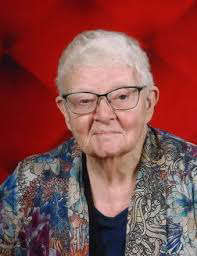
The holiday season wouldn’t be the same without agriculture.
When you look at holiday decorations, agriculture can be seen in many ways including the plants we decorate, the flowers that we give (poinsettias), and items that we set around our houses. One way that agriculture has impacted the holidays is through decorative candles.
Many individuals have been accredited with the creation of candles and there have been many agricultural products used to make candles. The first candles used by the Ancient Egyptians were rushlights or torches made by soaking the core of reeds in melted animal fat. Wax made from indigenous insects combined with seeds and rolled rice paper was used to make the candles utilized by the early Chinese. In comparison, the wax extracted from tree nuts were used in Japan and wax made by boiling the fruit of the cinnamon tree was used in India.
Tallow (or animal fat) was primarily used by early Western cultures to make candles. It wasn’t until the Middle Ages that individuals in Europe began to use beeswax instead. There were many advantages to beeswax over tallow since it burned pure, did not have a smoky flame, and emitted a sweet smell.
Another alternative to using tallow and beeswax came when colonial women began to use berries from the bayberry bush to make candles. Candles made from bayberry bushes produce a sweet-smell and burned clean like beeswax. However, it was extremely tedious to get the wax from the bayberries.
One of the biggest changes in candle making came in the 1850s when chemist learned how to efficiently separate the waxy substance from petroleum and refine it. This substance was called paraffin wax and was odorless when burned. It was economical to produce and a big leap forward for the candle making industry.
With plants grown to produce the wax, extracting wax from animal fat, utilizing bees wax, and now using paraffin wax to make candles, you can see the numerous links candles have within the agricultural industry. One final link came in the 1990s when U.S. agricultural chemist began to utilize soybean wax for candles. Soybean wax is softer and is a slower burning wax when compared to paraffin wax.
This holiday season when you are lighting up your candles, remember that they are deeply connected to agriculture. As you light them, remember to stay safe by always using a candleholder specifically designed for candle use and trimming candlewicks to ¼ inch before lighting or re-lighting them. Lastly, make sure you have a working smoke detector in your house and do not leave a lit candle unattended.
Visit our homepage at www.extension.purdue.edu/putnamor you can contact the local Purdue Extension Office by calling 765.653.8411 for more information regarding this week’s column topic or to RSVP for upcoming events. It is always best to call first to assure items are ready when you arrive and to RSVP for programs. While many publications are free, some do have a fee. Purdue University is an equal access/equal opportunity institution. All times listed are Eastern Time.
Upcoming Events:
Dec. 23-Jan. 1 – Extension Office closed for holidays
Jan. 2 – Extension Office reopens
Jan. 7 – Houseplants in their Native Habitat: Costa Rica Webinar, 7:00 pm,
http://tinyurl.com/PutMG2025
Jan. 13 – Early registration ends for Leaving a Lasting Legacy, Register at
https://purdue.link/Legacy
Jan. 21 – Leaving a Lasting Legacy begins
Jan. 23 – Joint Annual Dinner for Purdue Extension & Putnam Co. SWCD, Fairgrounds,
6:00 pm, $5 register in advance at 765-653-8411
The holiday season wouldn’t be the same without agriculture. When you look at holiday decorations, agriculture can be seen in many ways including the plants we decorate, the flowers that we give (poinsettias), and items that we set around our houses. One way that agriculture has impacted the holidays is through decorative candles.
Many individuals have been accredited with the creation of candles and there have been many agricultural products used to make candles. The first candles used by the Ancient Egyptians were rushlights or torches made by soaking the core of reeds in melted animal fat. Wax made from indigenous insects combined with seeds and rolled rice paper was used to make the candles utilized by the early Chinese. In comparison, the wax extracted from tree nuts were used in Japan and wax made by boiling the fruit of the cinnamon tree was used in India.
Tallow (or animal fat) was primarily used by early Western cultures to make candles. It wasn’t until the Middle Ages that individuals in Europe began to use beeswax instead. There were many advantages to beeswax over tallow since it burned pure, did not have a smoky flame, and emitted a sweet smell.
Another alternative to using tallow and beeswax came when colonial women began to use berries from the bayberry bush to make candles. Candles made from bayberry bushes produce a sweet-smell and burned clean like beeswax. However, it was extremely tedious to get the wax from the bayberries.
One of the biggest changes in candle making came in the 1850s when chemist learned how to efficiently separate the waxy substance from petroleum and refine it. This substance was called paraffin wax and was odorless when burned. It was economical to produce and a big leap forward for the candle making industry.
With plants grown to produce the wax, extracting wax from animal fat, utilizing bees wax, and now using paraffin wax to make candles, you can see the numerous links candles have within the agricultural industry. One final link came in the 1990s when U.S. agricultural chemist began to utilize soybean wax for candles. Soybean wax is softer and is a slower burning wax when compared to paraffin wax.
This holiday season when you are lighting up your candles, remember that they are deeply connected to agriculture. As you light them, remember to stay safe by always using a candleholder specifically designed for candle use and trimming candlewicks to ¼ inch before lighting or re-lighting them. Lastly, make sure you have a working smoke detector in your house and do not leave a lit candle unattended.
Visit our homepage at www.extension.purdue.edu/putnamor you can contact the local Purdue Extension Office by calling 765.653.8411 for more information regarding this week’s column topic or to RSVP for upcoming events. It is always best to call first to assure items are ready when you arrive and to RSVP for programs. While many publications are free, some do have a fee. Purdue University is an equal access/equal opportunity institution. All times listed are Eastern Time.
Upcoming Events:
Dec. 23-Jan. 1 – Extension Office closed for holidays
Jan. 2 – Extension Office reopens
Jan. 7 – Houseplants in their Native Habitat: Costa Rica Webinar, 7:00 pm,
http://tinyurl.com/PutMG2025
Jan. 13 – Early registration ends for Leaving a Lasting Legacy, Register at
https://purdue.link/Legacy
Jan. 21 – Leaving a Lasting Legacy begins
Jan. 23 – Joint Annual Dinner for Purdue Extension & Putnam Co. SWCD, Fairgrounds,
6:00 pm, $5 register in advance at 765-653-8411
The holiday season wouldn’t be the same without agriculture. When you look at holiday decorations, agriculture can be seen in many ways including the plants we decorate, the flowers that we give (poinsettias), and items that we set around our houses. One way that agriculture has impacted the holidays is through decorative candles.
Many individuals have been accredited with the creation of candles and there have been many agricultural products used to make candles. The first candles used by the Ancient Egyptians were rushlights or torches made by soaking the core of reeds in melted animal fat. Wax made from indigenous insects combined with seeds and rolled rice paper was used to make the candles utilized by the early Chinese. In comparison, the wax extracted from tree nuts were used in Japan and wax made by boiling the fruit of the cinnamon tree was used in India.
Tallow (or animal fat) was primarily used by early Western cultures to make candles. It wasn’t until the Middle Ages that individuals in Europe began to use beeswax instead. There were many advantages to beeswax over tallow since it burned pure, did not have a smoky flame, and emitted a sweet smell.
Another alternative to using tallow and beeswax came when colonial women began to use berries from the bayberry bush to make candles. Candles made from bayberry bushes produce a sweet-smell and burned clean like beeswax. However, it was extremely tedious to get the wax from the bayberries.
One of the biggest changes in candle making came in the 1850s when chemist learned how to efficiently separate the waxy substance from petroleum and refine it. This substance was called paraffin wax and was odorless when burned. It was economical to produce and a big leap forward for the candle making industry.
With plants grown to produce the wax, extracting wax from animal fat, utilizing bees wax, and now using paraffin wax to make candles, you can see the numerous links candles have within the agricultural industry. One final link came in the 1990s when U.S. agricultural chemist began to utilize soybean wax for candles. Soybean wax is softer and is a slower burning wax when compared to paraffin wax.
This holiday season when you are lighting up your candles, remember that they are deeply connected to agriculture. As you light them, remember to stay safe by always using a candleholder specifically designed for candle use and trimming candlewicks to ¼ inch before lighting or re-lighting them. Lastly, make sure you have a working smoke detector in your house and do not leave a lit candle unattended.
Visit our homepage at www.extension.purdue.edu/putnamor you can contact the local Purdue Extension Office by calling 765.653.8411 for more information regarding this week’s column topic or to RSVP for upcoming events. It is always best to call first to assure items are ready when you arrive and to RSVP for programs. While many publications are free, some do have a fee. Purdue University is an equal access/equal opportunity institution. All times listed are Eastern Time.
Upcoming Events:
Dec. 23-Jan. 1 – Extension Office closed for holidays
Jan. 2 – Extension Office reopens
Jan. 7 – Houseplants in their Native Habitat: Costa Rica Webinar, 7:00 pm,
http://tinyurl.com/PutMG2025
Jan. 13 – Early registration ends for Leaving a Lasting Legacy, Register at
https://purdue.link/Legacy
Jan. 21 – Leaving a Lasting Legacy begins
Jan. 23 – Joint Annual Dinner for Purdue Extension & Putnam Co. SWCD, Fairgrounds,
6:00 pm, $5 register in advance at 765-653-8411
The holiday season wouldn’t be the same without agriculture. When you look at holiday decorations, agriculture can be seen in many ways including the plants we decorate, the flowers that we give (poinsettias), and items that we set around our houses. One way that agriculture has impacted the holidays is through decorative candles.
Many individuals have been accredited with the creation of candles and there have been many agricultural products used to make candles. The first candles used by the Ancient Egyptians were rushlights or torches made by soaking the core of reeds in melted animal fat. Wax made from indigenous insects combined with seeds and rolled rice paper was used to make the candles utilized by the early Chinese. In comparison, the wax extracted from tree nuts were used in Japan and wax made by boiling the fruit of the cinnamon tree was used in India.
Tallow (or animal fat) was primarily used by early Western cultures to make candles. It wasn’t until the Middle Ages that individuals in Europe began to use beeswax instead. There were many advantages to beeswax over tallow since it burned pure, did not have a smoky flame, and emitted a sweet smell.
Another alternative to using tallow and beeswax came when colonial women began to use berries from the bayberry bush to make candles. Candles made from bayberry bushes produce a sweet-smell and burned clean like beeswax. However, it was extremely tedious to get the wax from the bayberries.
One of the biggest changes in candle making came in the 1850s when chemist learned how to efficiently separate the waxy substance from petroleum and refine it. This substance was called paraffin wax and was odorless when burned. It was economical to produce and a big leap forward for the candle making industry.
With plants grown to produce the wax, extracting wax from animal fat, utilizing bees wax, and now using paraffin wax to make candles, you can see the numerous links candles have within the agricultural industry. One final link came in the 1990s when U.S. agricultural chemist began to utilize soybean wax for candles. Soybean wax is softer and is a slower burning wax when compared to paraffin wax.
This holiday season when you are lighting up your candles, remember that they are deeply connected to agriculture. As you light them, remember to stay safe by always using a candleholder specifically designed for candle use and trimming candlewicks to ¼ inch before lighting or re-lighting them. Lastly, make sure you have a working smoke detector in your house and do not leave a lit candle unattended.
Visit our homepage at www.extension.purdue.edu/putnamor you can contact the local Purdue Extension Office by calling 765.653.8411 for more information regarding this week’s column topic or to RSVP for upcoming events. It is always best to call first to assure items are ready when you arrive and to RSVP for programs. While many publications are free, some do have a fee. Purdue University is an equal access/equal opportunity institution. All times listed are Eastern Time.
Upcoming Events:
Dec. 23-Jan. 1 – Extension Office closed for holidays
Jan. 2 – Extension Office reopens
Jan. 7 – Houseplants in their Native Habitat: Costa Rica Webinar, 7:00 pm,
http://tinyurl.com/PutMG2025
Jan. 13 – Early registration ends for Leaving a Lasting Legacy, Register at
https://purdue.link/Legacy
Jan. 21 – Leaving a Lasting Legacy begins
Jan. 23 – Joint Annual Dinner for Purdue Extension & Putnam Co. SWCD, Fairgrounds,
6:00 pm, $5 register in advance at 765-653-8411






